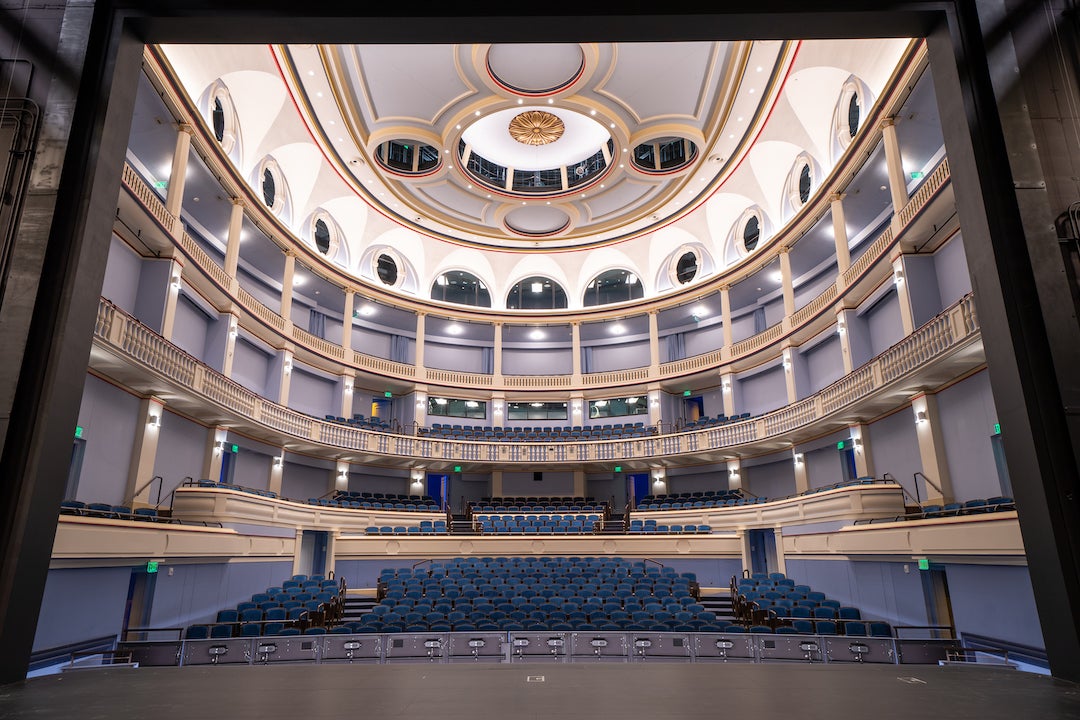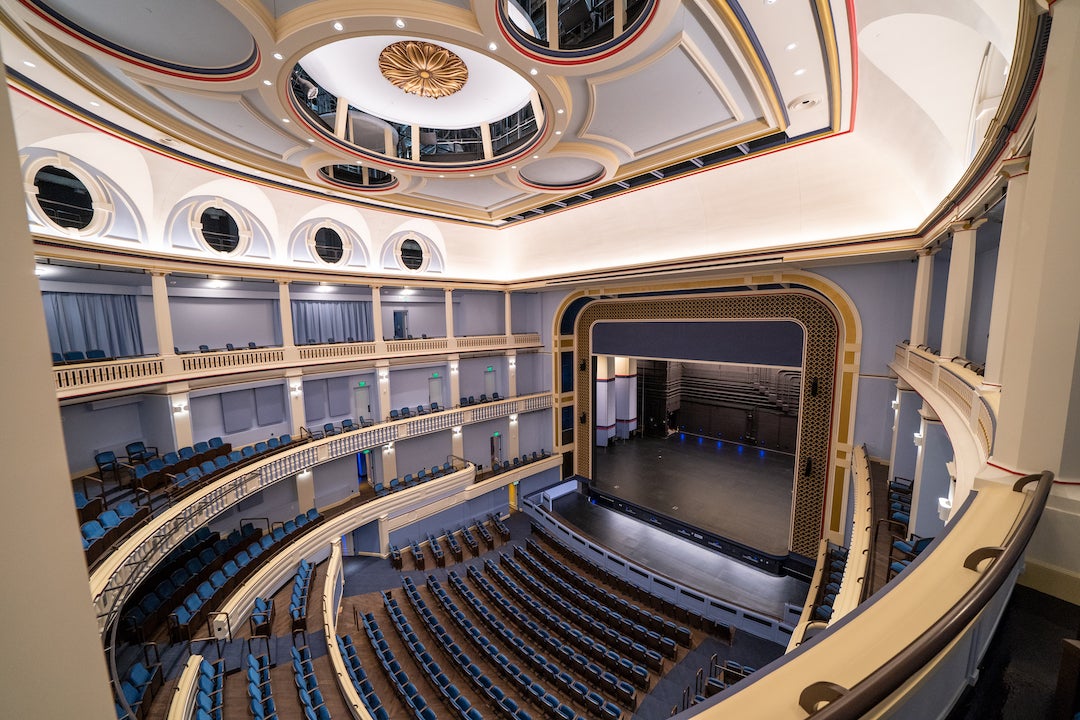When you walk into Rice University's new Brockman Hall for Opera, it's easy to be awestruck by its beauty and grandeur.
And while there's no question of the venue’s magnificence — it is the first of its kind among international music schools and conservatories — its uniqueness extends far beyond the physical space, according to Shepherd School Dean Matthew Loden.
"The new opera hall is, without question, a work of art," he said. "But it’s not just visually gorgeous. All of the careful planning that went into this building has resulted in spaces that are custom-built for the needs of our students and sound even more beautiful than they look."

The Lucian and Nancy Morrison Theater inside the opera hall seats 600. It’s much smaller than famous opera venues like the Metropolitan Opera and Teatro alla Scala, which have more than 2,000 seats each. Loden said the size was intentional, as the hall is a training facility and opera singers' voices do not fully develop until well into their 20s or 30s.
"Performing in too large of a space at an early age can result in performers damaging their vocal cords," Loden said. "We needed the right-sized venue so that our voice students could learn to project and fill a theater, but safely. This space allows them to do that."
The theater's acoustics also had to be just right so that the softest notes and whispers could be clearly heard from every seat in the hall, and the biggest, boldest sounds from performers could travel through the hall free of excessive reverberation and echo that can take away from a performance.
It was also important for the theater to have a pit capable of accommodating a full opera orchestra — up to 70 performers. Loden said smaller performance halls like Morrison don't typically accommodate this size of orchestra, but it was critical for the Shepherd School's instrumental musicians to be able to train with the same size of orchestra they would experience as a professional musician in the world's top opera houses.
"One of the hallmarks of a Shepherd School education is that our graduates emerge ready to take on jobs with the top performing organizations throughout the world," Loden said. "So this was a very important part of the process in planning for the theater."
So how do you create a space that allows opera stars in training to connect with their audiences while singing over a full orchestra, without overextending their voices or being drowned out by the pit? That's where the acoustic consultants at Threshold Acoustics come in.
“Together we created an ideal training facility that matches the caliber of the Shepherd School musicians,” said Robin Glosemeyer Petrone, a partner at Threshold Acoustics. “We created a facility to not only train the voices but also to create future audiences through a shared appreciation and love of the art.”
Design inspiration came from historic opera houses including the Royal Opera of Versailles in France and the Estates Theatre in Prague. Ultimately the openness of Versailles was preferred for the way it enhances the connection between the performers and the audience.
The theater is full of intricate design details, which are more than just cosmetic — they serve an acoustic purpose. Petrone said one of the goals was to "bring audience members into the volume of the room so that they could experience opera all the way around them."
"If you look at the Italianate style of opera houses common in Europe, they have open orchestra floor seating, but individual boxes in the balconies that look into the main part of the room," Petrone said. "If you're sitting in those boxes, you are having this very frontal experience where you've got some sound coming at you rather than surrounding you."
The experience for audience members in Morrison Theater is very different, as each tier of seating is open instead of being made up of individual boxes.

"This style of seating engages audience members in the space and changes the kind of experience they have," said Scott Pfeiffer, a partner at Threshold Acoustics. "And since the audience is distributed into smaller neighborhoods, it makes the space feel more intimate and allows the stage performers to learn how to really connect with an audience and feel their response."
The result of the careful coordination between Threshold Acoustics, theater planning and design consultants Fisher Dachs Associates and Allan Greenberg Architect LLC is a versatile theater that is not only ideal for opera but can also be used for chamber music, smaller orchestras and ensembles, recitals and more.
"It's a one-of-a-kind space," Loden said. "We're so lucky to have this ideal training facility for voice, orchestral and keyboard instruments, musicology and composition. And we owe a debt of gratitude to the Shepherd School’s former dean, Robert Yekovich, for his leadership and making this dream building a reality."

